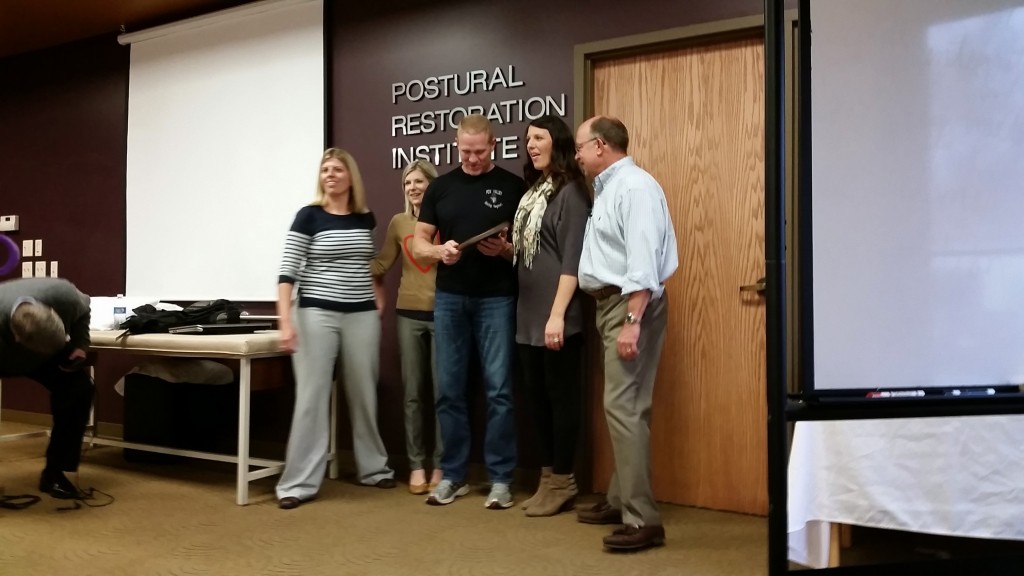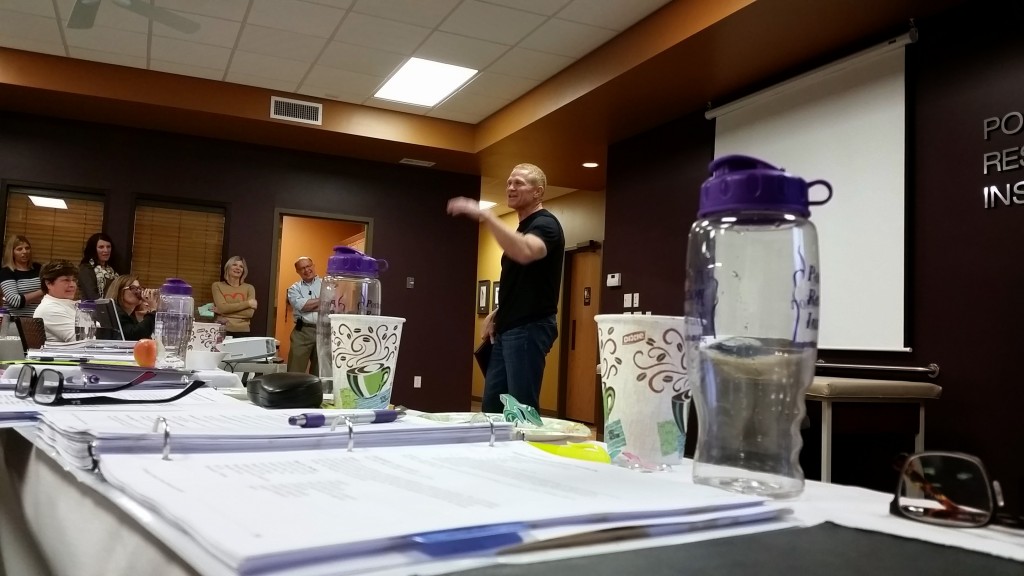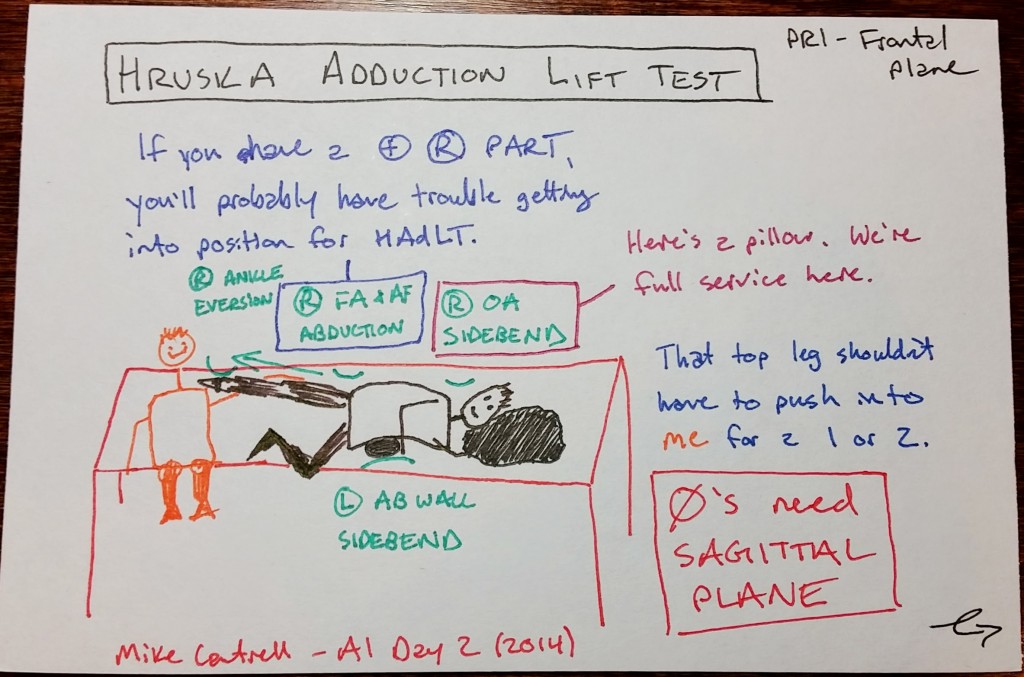This is part II in a four part series. All parts have all been published, so here is part I, part II, part III, and part IV.
Click here to subscribe to my newsletter.
Day 2: Triplanar Activity
Day two was all about frontal and transverse integration and consisted of great presentations from Mike Cantrell and Lori Thomsen. I can’t say enough good things about these two.
I’ve met Mike before and there is not a single person in this world that cares more about teaching you than he does. I like to think that I am similar, but this dude blows me out of the water.
I had the pleasure of finally meeting Mrs. Lori Thomsen during Advanced Integration. She may not think she’s funny, but some of the most hilarious antics I have ever been a part of went down that weekend. And they were all her doing. Very excited to welcome her to her new home away from home in Indianapolis when she comes to teach the Pelvis course in March (you better be there).
I’m going to break this day down by each of the speakers and some of the highlights they had to say.
DISCLAIMER: this post will reference PRI tests. If you are unfamiliar with them, you will be lost.
The biggest take home point is that pathology occurs when you can’t maintain flexion while moving in the frontal and transverse planes.
Lori Thomsen
For those who are unfamiliar with PRI, they have three foundational courses: the leg course (Myokinematic Restoration), the arm course (Postural Respiration), and the pelvis course (Pelvis Restoration).
Lori put together the pelvis course, so she went through the pelvis tests with us.
- The Adduction Drop Test: can the left innominate of the pelvis get to neutral?
- The Pelvic Ascension Drop Test: can the left innominate extend? Can I get into stance phase of gait?
- The Passive Abduction Raise Test: can my innominate get into swing phase?
Important clarification: these tests tell me a lot of things in addition to the bullets listed above. I will not go into all possible presentations and what they mean. It is helpful for me, however, to think of these tests in terms of the gait cycle as Lori presented them.
Moving on, we talked about PECs. This acronym signifies a person who uses their back a lot.
DEFINITION. PEC: posterior exterior chain of muscles; person with these muscles facilitated.
This PEC pattern drives extension. Very active people often fall into this category because strong backs lead to strong people. The purest example of a PEC is a 100m sprinter.
You may not want to take that away from a competing athlete because it may make them slower. If they need greater movement variability (i.e. their sport/activity has more frontal and transverse plane demands), they probably need to learn how to shut down that PEC.
Some PECs are just locked up, and Lori suggested using alternating activities to help free these people up. The caveat, however, is that they need to have at least a 1/5 on the Hruska Adduction Lift Test, or else they don’t have abs for alternating.
After the PEC is inhibited, the person regresses to a left AIC or to neutral.
DEFINITION. Left AIC: left anterior interior chain of muscles; L diaphragm, L psoas, L iliacus, L vastus lateralis, and L biceps femoris; drives contralateral stance phase.

DEFINITION. Neutral: “the human body posture is in a position in which a set of muscles [left AIC, right BC, and right TMCC] is disengaged.” (AI 2014 manual, p. 78)
Lori also went through the Respiratory Adductor Pullback non-manual technique and explained how it was a frontal plane exercise. This was an AH-HA! moment for me because it has always looked like a transverse plane exercise to my feeble mind. The following picture diagrams the exercise for those of you who are familiar with it. Basically, we “inhale and pull back” to put the exhaled left posterior outlet in a state of greater inhalation, and we “exhale and push the knee down” to put the inhaled left anterior inlet in a state of greater exhalation. This allows the pelvic diaphragm to rise on the left and helps us achieve stance phase on the left side.

Lastly, there was another brilliant takeaway in coaching wall squats: If they can’t feel their quads, they’re using their backs.
The “hips back” cue is becoming more and more scarce in my coaching.
Seriously, Lori is fantastic. Can’t wait to see more of her at IFAST in March.
Mike Cantrell
Before we get too far into what he talked about during Day 2 of the course, I want to mention that Mike received an award for being such a great teacher. Nobody is more deserving than this man.


Mike started by asking us if we though SI fusion was usually a good strategy for treatment. The class consensus was no, at least before trying less invasive treatment.
“Why are ya’ll fusing SI joints then?”
He then talked about the “posterior gluteus medius” for a long time. I put it in quotes because it was really a talk about the frontal plane.
“The dirty little secret of PRI is that we’re not good at right stance either.”
-Mike Cantrell
We are not good at getting to the left, which makes us bad at left stance, but we’re also OVERlateralized to the right, making us bad at right stance.
Summary of this talk: if your right glute max doesn’t put you in your left hip, you’re just fusing an SI joint.
He also broke down the Hruska Adduction Lift Test, going through all of the frontal plane for which you could ever ask. Sometimes you just need to put them in sidelying and WATCH THEM SWEAT.
Here’s a sweet picture of that talk.

Debauchery
After day two, an unnamed accomplice helped us break into Ron’s office that night, where a few of us abused his desk.
After days of heavy information, travel, and other matters, this break for laughter was much needed. I am eternally grateful to have been a part of this.
Though I think the gold is supposed to be a secret, this picture shows how funny it was:

Coloring
One of the things that sets PRI apart from other courses is their ability to teach. There’s a whole section in the Advanced Integration manual where you color a bunch of anatomy by what “family” they are in.
- Sagittal
- Frontal – Adduction
- Frontal – Abduction
- Transverse
- IR
This instructor-guided color coding helps you understand the integration of anatomy so well.
I was just talking about this yesterday with my coworker Jae Chung, but anatomy is one of the more difficult pieces of this model to understand. With this difficulty, however, comes a huge payoff which cannot be overvalued.
Day 2 Conclusion
Think in the frontal plane. And learn your anatomy.
…And have fun sometimes.
Click here to subscribe to my newsletter.







